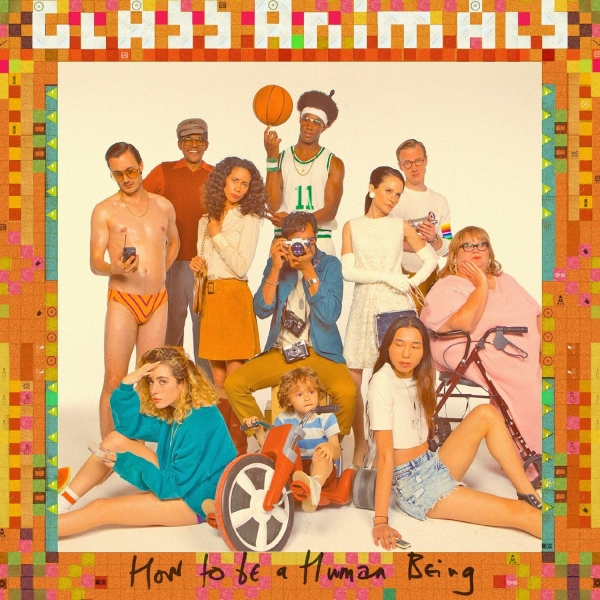Glass Animals demonstrates eccentricity and hesitance to conform
 Defying categorization with its signature blend of rock, pop and electronica, indie quartet Glass Animals delivered a gorgeous performance replete with kaleidoscopic lights and a gold-plated, pineapple-shaped disco ball on Thursday evening at The Shrine.
Defying categorization with its signature blend of rock, pop and electronica, indie quartet Glass Animals delivered a gorgeous performance replete with kaleidoscopic lights and a gold-plated, pineapple-shaped disco ball on Thursday evening at The Shrine.
Since releasing one of the strongest debut records to date in 2014, ZABA, Glass Animals — comprising lead vocalist Dave Bayley, guitarist Drew MacFarlane, drummer Joe Seaward and bassist Edmund Irwin-Singer — has touted an unrivaled position at the forefront of synth pop. With How To Be A Human Being, the Oxford-based band perpetuates staple elements from its first album such as falsetto harmonies, rampant beats and psychedelic funk that altogether spin an addictive and distinctive style of music. The sophomore album goes above and beyond the conventions introduced in ZABA and truly solidifies the band’s status in contemporary pop.
In the Shrine Auditorium, the stage was flanked by two palm trees while a glittering pineapple — a Glass Animals hallmark — hovered overhead and bold block letters in the background spelled out the band’s initials. Most notably, the set was framed by Tetris blocks, reminiscent of giant pixels, that hung suspended in the air and flashed in rhythm with the music.
A sudden flood of golden light, the whimsical strum of a harp, a hearty bongo riff, a shout of “What’s up, L.A.?” and Glass Animals launched into the opening sequence of “Life Itself.” Although the auditorium was lined with rows of cushioned seats, the band had the entire audience on their feet from the first note.
Following the powerful opener came “Youth,” a testament to the band’s reluctance to bend to the norms of any one genre per its electronic groove and hyperactive instrumental backing. With boyish charm, untamed enthusiasm and seemingly unrehearsed dance moves, the band members made it clear they were there to have a good time and not take themselves too seriously.
They also exhibited impressive versatility in transitioning from a mellow tale of bygone boyhood in “Poplar St” straight into a piece of hard synthetic pop, fueled by talk of drugs and crushed dreams, in “This Side of Paradise.”
Despite a lull in energy during the middle third of Glass Animals’ set, the crowd roared as the Tetris blocks were illuminated in cadence with the distinctive opening trills of “Gooey,” the band’s biggest hit to date. This piece in particular was complemented by an inundating haze of smoke drenched in richly colored light to create a dim, dreamlike atmosphere that matched the ethereal quality of the song itself.
Although Bayley performed with zeal and switched effortlessly between a guitar and tambourine, he lacked audience engagement beyond a few customary shouts and rendered his bandmates background characters. Fortunately, despite negligent effort to charm the crowd, even less popular songs received rounds of cheers.
Following a hasty farewell, the boys reclaimed the stage for a “special surprise” encore, featuring Gnarls Barkley’s “Crazy” and their own dizzyingly psychedelic “Pork Soda” to close. Arguably, Glass Animals’ biggest draw is its wonderfully peculiar yet rawly human lyrics and its ability to engage the entire audience in a chant of, “Pineapples are in my head / Got nobody ’cause I’m brain dead.”
From start to finish and true to form, Glass Animals exuded an irreplicable eccentricity under the gaze of light beams ricocheting from the golden pineapple.

